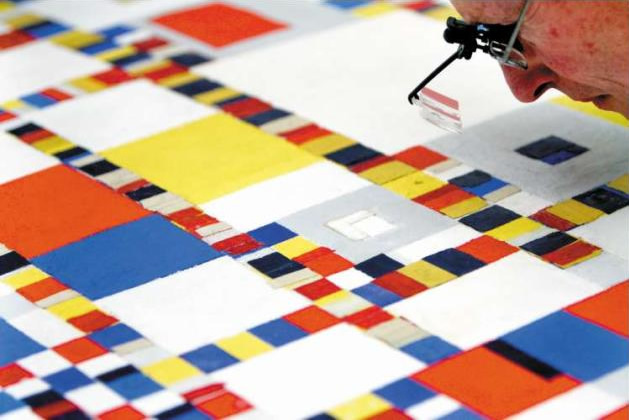
A recent competition, Elegant Algorithms, organised by Setup in the Netherlands, challenged entrants to create a digital version of Piet Mondrian's painting Victory Boogie Woogie.The results range from faithful reproduction to radical reworkings, but all are fascinating in their own way. Each one includes a link to the code, so you can also look 'under the hood' and tinker.
The original Victory Boogie Woogie was unfinished, as Mondrian died of pneumonia in New York in 1944. But even so, the progression from Broadway Boogie Woogie of 1943 is profound, the simple grid of small coloured squares becoming more fractured, and with larger colour planes floating above and behind the grid; the lozenge format adds further visual tension. It arguably shows a transition to a more three-dimensional mode of representation than the resolutely flat pictures of Mondrian's earlier abstract works.
I'd never realised that Mondrian was such catnip for generative design wonks. But it turns out there is a long history of generative design projects that take the work of Mondrian as a starting point, especially the later, pure abstract works Mondrian called neo-plasticism.
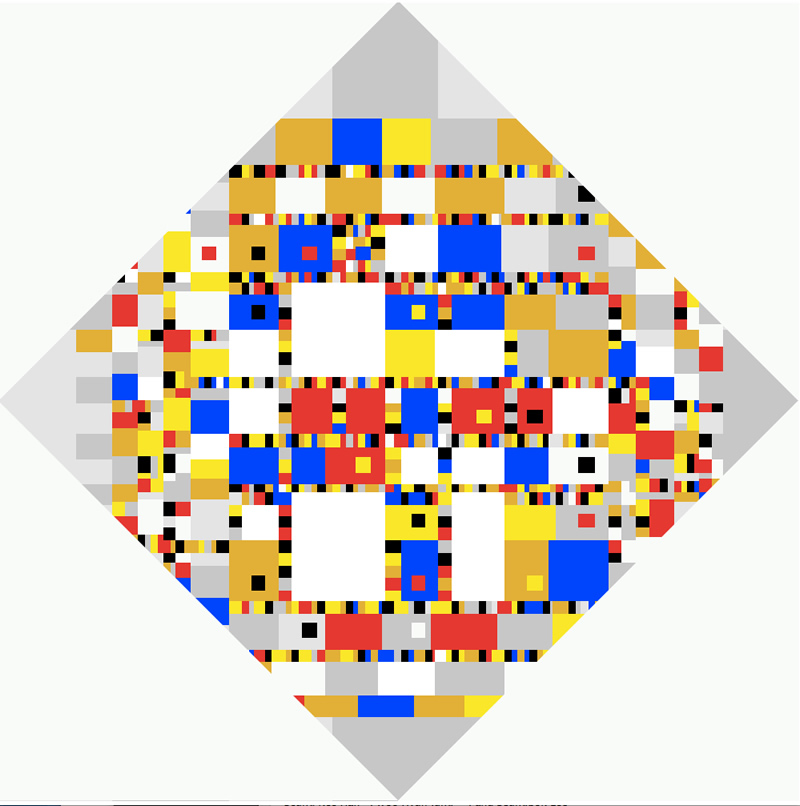
There's a great explanation video of one of the Elegant Algorithms entries, Mondify, by Kiri Nichol:
One of Mondrian early works, painted when he was on the cusp of pure abstraction, was also the subject of one of the most famous scientific experiments into aesthetics by Michael Noll, who wanted to see if people could tell a Mondrian painting, Composition in Line (1916) from a computer generated one. His study revealed that only 28% of subjects could identify the original Mondrian.
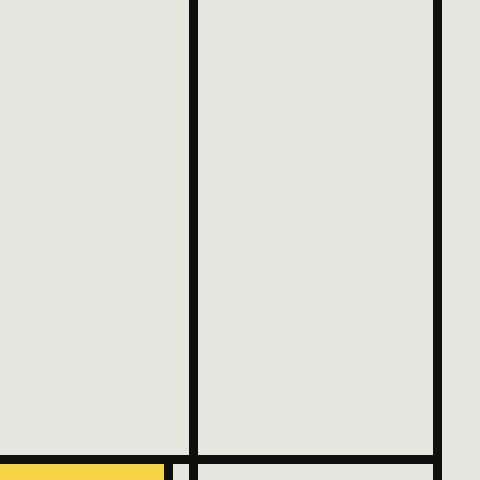
Mondrian generators are fairly commonplace online. Darwindrian (composition of 'Darwin' and 'Mondrian') is an AI program creating painting with neo-plasticism style using a variation of genetic algorithm. It generates 20 images, and then you can select which ones you like to be used in the next generation.
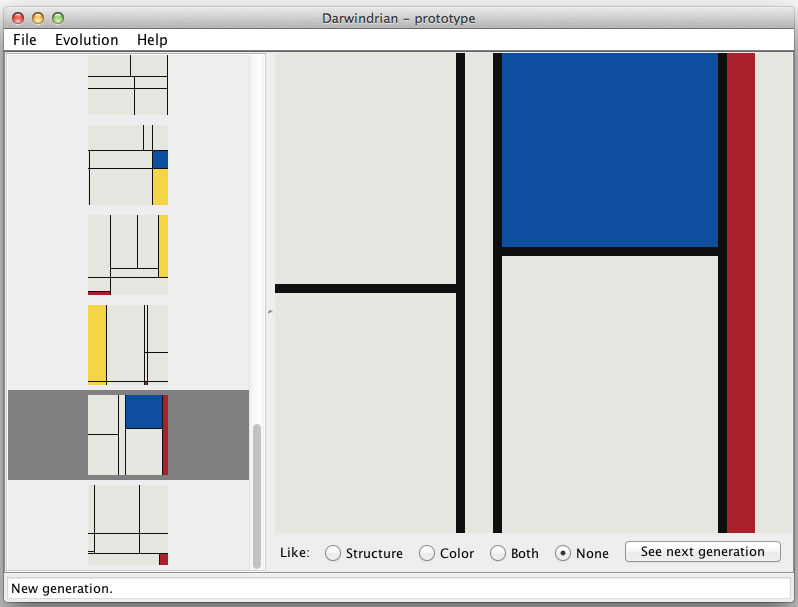
myData=myMondrian by CJ Yeh (2004) will create a Mondrian-esque composition based on your own personal data.
Cyber-genetic Neo-plasticism is an AI program creating Mondrian-like paintings by using interactive bacterial evolution algorithm.
While it's relatively easy to create a Mondrian-generator which can spit out Mondrian-esque compositions capable of fooling the average layperson, a recent study by a group of Korean students at Chungbuk National University has tackled the much more difficult reverse problem - trying to spot a genuine Mondrian from a raft of imitations. Their research used machine learning to understand the deeper subconscious rules that Mondrian used in this paintings that he would probably been unaware of. This has great implications in the future for the authentication and verification of works of art.
The paper, [Supervised Learning-Based Feature Selection for Mondrian Paintings Style Authentication])http://www.fujipress.jp/finder/xslt.php?mode=present&inputfile=JACII001600070016.xml), is long on maths and short on art theory, but is fascinating in its method:
"First, the Mondrian oeuvre of neoplasticism is compiled in a digital form and encoded as script. Second, based on this statistical information, a statistical generative model is built to produce pseudo-Mondrian style works. Third, the two supervised learning methods are applied to classify the collection of both Mondrian’s works and computer-generated works."
Once the machine method has learnt to distinguish the real from the computer generated, it can then be applied to other images to attempt a distinction. Their conclusion was that 'region portioning' and 'dual graph' were the most meaningful ways of distinguishing a real Mondrian from the fake.
But this knowledge also makes it possible to refine better Mondrian fakes, an arms race in the detection between the real and the simulation. A purely compositional approach to detecting Mondrian fakes is thus perhaps doomed to failed. Instead the time honoured forensic techniques of detecting forgeries based on the physical properties of the paintings seems more reliable, such as canvas analysis and paint analysis using spectroscopy.
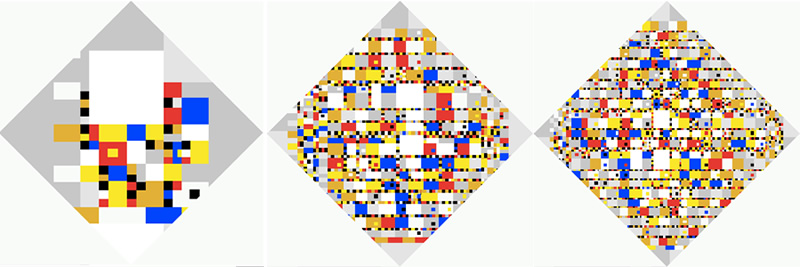
Could a generative approach to 2D images of a highly formal movement such as De Stijl also be applied to 3D design? The furniture of Gerrit Rietveld seems eminently suitable for a generative, dare I say parametric approach, as does the most complete manifestation of De Stijl in architecture, the Rietveld-Schroder House. This seems to be an area ripe for future exploration.
